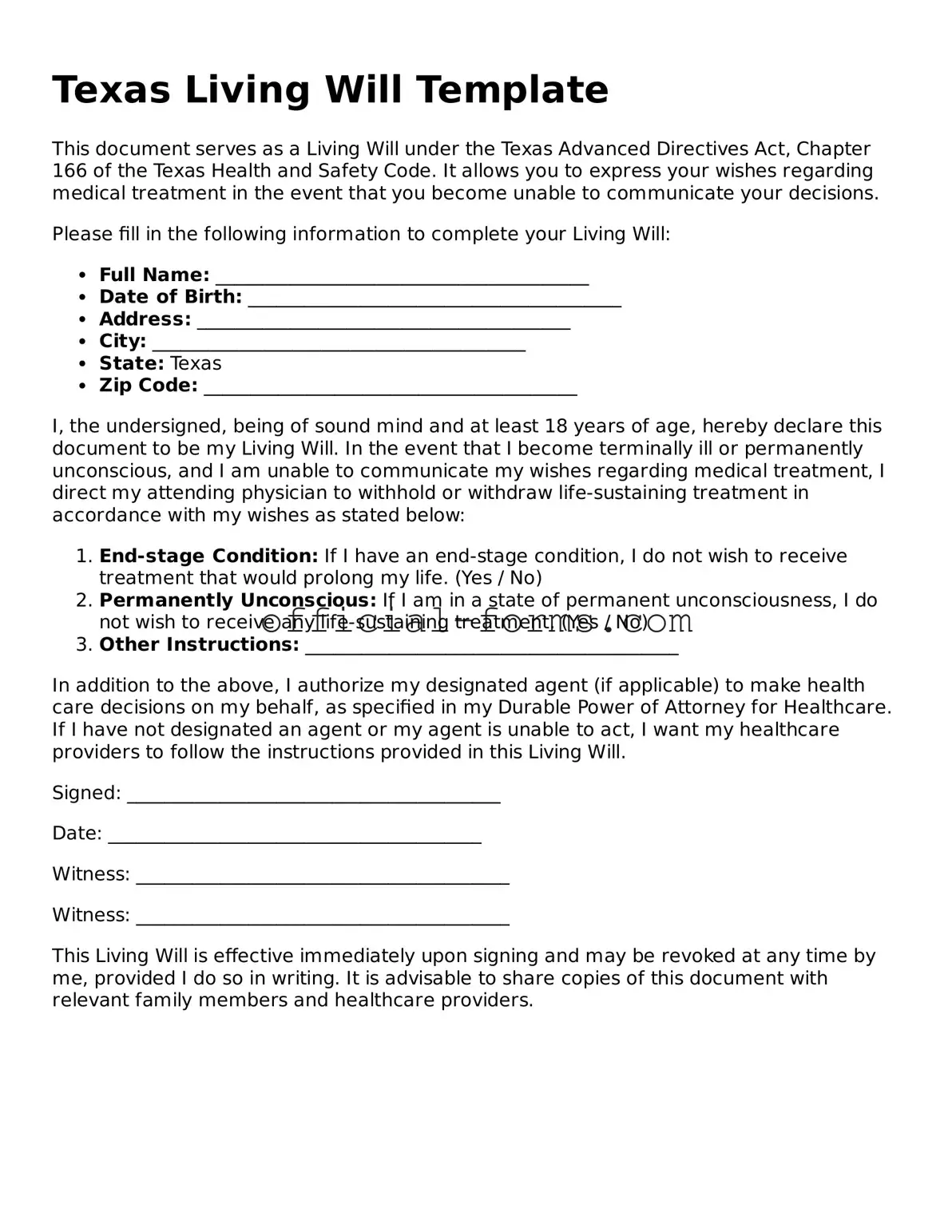Completing a Texas Living Will form is an important step in ensuring that your healthcare wishes are honored. However, many individuals make mistakes during this process that can lead to confusion or unintended consequences. Understanding these common pitfalls can help ensure that your Living Will accurately reflects your intentions.
One frequent mistake is failing to specify the conditions under which the Living Will takes effect. Without clear criteria, healthcare providers may struggle to interpret your wishes. It is crucial to outline specific medical situations that would trigger the application of your Living Will.
Another common error is neglecting to sign the document properly. A Living Will must be signed in the presence of two witnesses or a notary public. If this step is overlooked, the document may not be considered valid, leaving your healthcare decisions unaddressed.
Many people also forget to discuss their Living Will with family members or healthcare providers. Open communication can prevent misunderstandings and ensure that your loved ones are aware of your preferences. Without this dialogue, there may be confusion when the time comes to make decisions on your behalf.
Some individuals make the mistake of using vague language. Terms like “extraordinary measures” can be interpreted differently by various people. It is essential to be as specific as possible to avoid ambiguity in your wishes.
Additionally, people often overlook the need to review and update their Living Will periodically. Life circumstances change, and so may your preferences regarding medical treatment. Regularly revisiting your Living Will ensures that it remains aligned with your current wishes.
Another mistake involves failing to include alternate decision-makers. In the event that your primary agent is unavailable, having a backup can prevent delays in care. Designating alternate individuals can provide peace of mind that your wishes will still be honored.
Lastly, some individuals mistakenly assume that a Living Will is the same as a Power of Attorney for healthcare. While both documents serve important roles, they are distinct. A Living Will outlines your wishes regarding medical treatment, while a Power of Attorney designates someone to make decisions on your behalf. Understanding this difference is vital for comprehensive healthcare planning.
